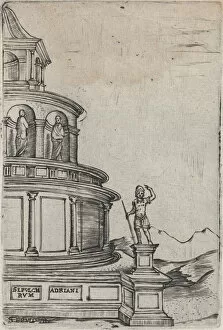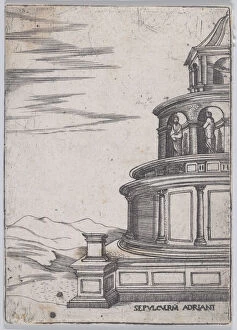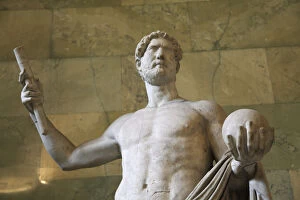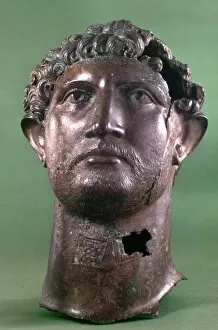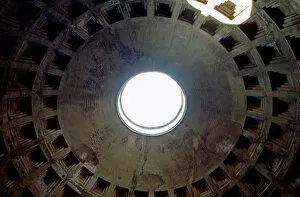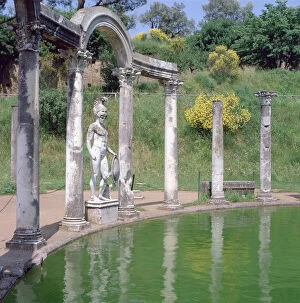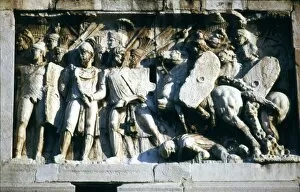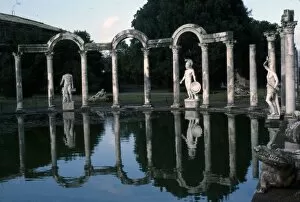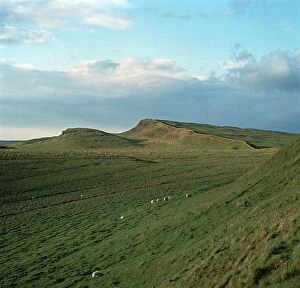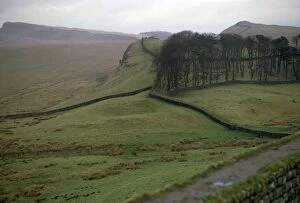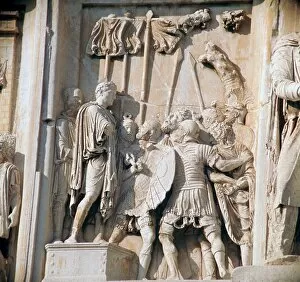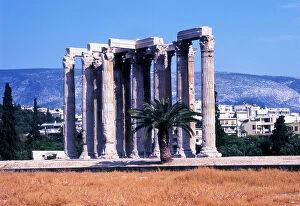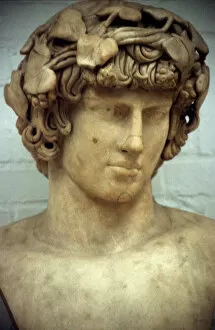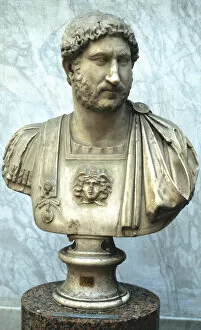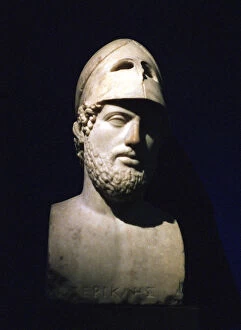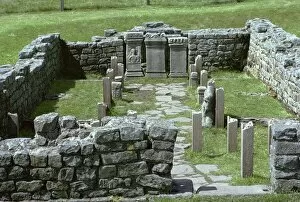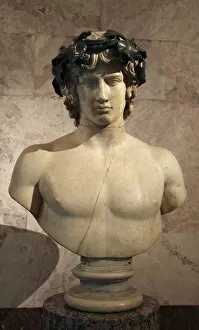Publius Aelius Hadrianus Collection (#2)
Publius Aelius Hadrianus, commonly known as Emperor Hadrian, was a prominent figure in Roman history during the first half of the 2nd century
For sale as Licensed Images
Choose your image, Select your licence and Download the media
Publius Aelius Hadrianus, commonly known as Emperor Hadrian, was a prominent figure in Roman history during the first half of the 2nd century. His reign is commemorated by various artifacts and coins that showcase his image and influence. The statue of Emperor Hadrian, created in the early 2nd century, stands tall as a testament to his power and authority. This lifelike depiction captures his regal demeanor and strong presence. Coins from different periods also portray Emperor Hadrian's likeness. From aureus to denarius, these intricately designed pieces reflect the wealth and prosperity of his empire. The unknown creators skillfully captured every detail of his face, showcasing his distinctive features. Not only did Emperor Hadrian leave behind an impressive legacy for himself but also for Empress Sabina. Coins portraying her reveal her beauty and elegance alongside her husband's reign. One particular coin depicts Antinous, a beloved companion of Emperor Hadrian who tragically died at a young age. This fragmentary portrait head serves as a poignant reminder of their deep bond. Throughout these artifacts, we catch glimpses into the life and times - an emperor whose influence spanned across vast territories. His rule left an indelible mark on Roman history that continues to captivate us today.

